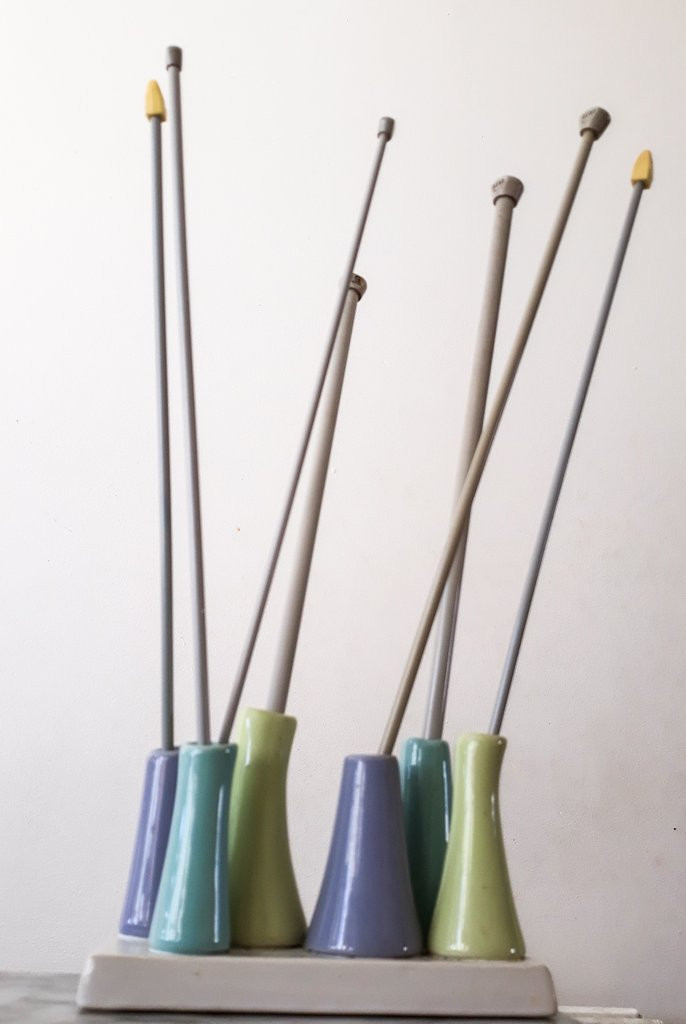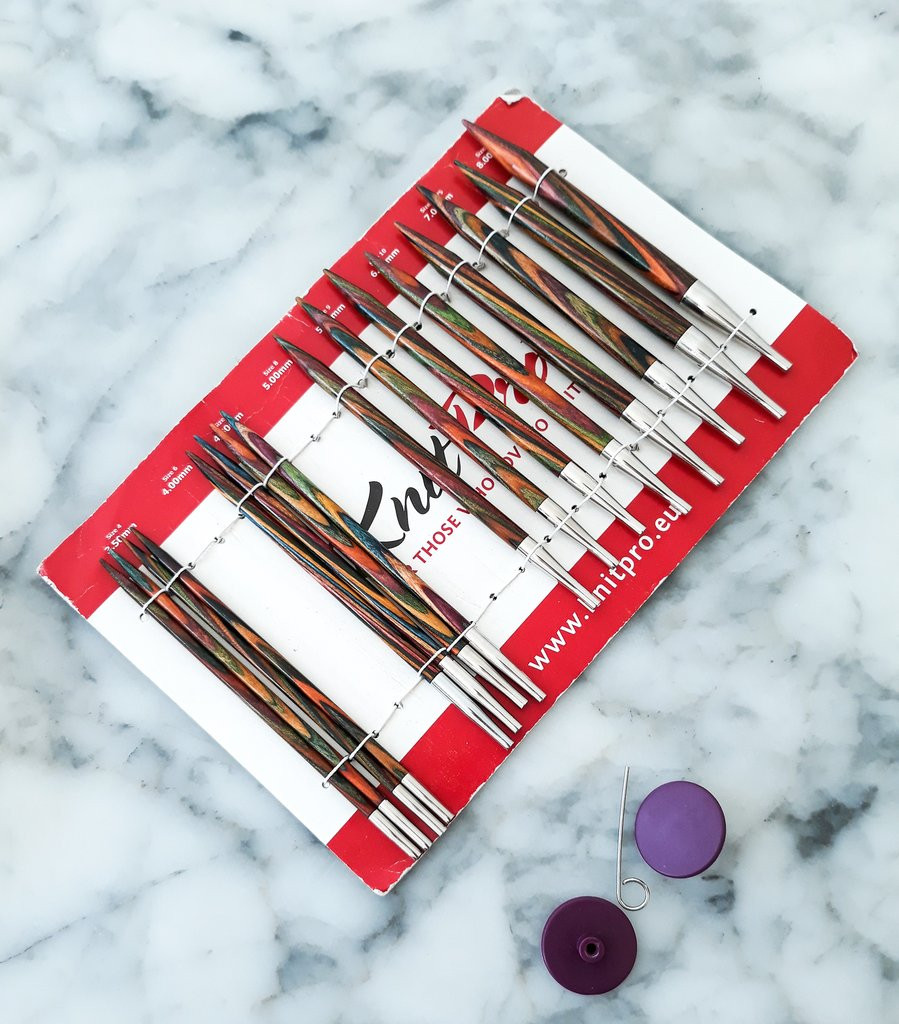20th Sep 2019
How to find your perfect knitting needles
By Máirín Ní Dhonncha of @aranaccessories
If you have gotten to the point where you are reading a post about knitting needles and you (hello!), I think the chances are high that you are either the owner of knitting needles, or the future purchaser of knitting needles. (These are not mutually exclusive categories)
Perhaps you were gifted your needles by someone else, and wonder what other options there are, or perhaps you are curious about styles or materials that are new to you. I am happy to share with you some of my needles (via photos) and give you my thoughts on my own journey with knitting needles.
Straight metal needles
Like most new knitters, I started with straight needles. I teach children to knit, and these are the needles they usually turn up with, and are probably easiest to use for a beginner. They have a point at one end, a bobble at the other to stop stitches falling off, and make it easier to see when you have reached the end of a row. I started by knitting with my mother’s needles, which were straight metal needles which came in various sizes – neither Metric nor American sizes, which are common today, but UK sizes, which I believe were also standard in Canada.

My mother still uses this type of needle, and probably still has some of the same needles I learnt on many years ago! These needles are long-lasting and sturdy, and good value for money. Many people love the smooth feeling of them, and find that this helps with certain ‘sticky’ yarns. You can find them usually in a set size, around 35cm/13 inches, but shorter sizes are available too. Don’t feel that these shorter sizes are just for children; they can be very useful if you need your project to be portable, or if you just don’t like the feel of the longer needles against your upper arms.
Bamboo and wooden needles
The next step for me was finding bamboo/ wooden needles. These still came in a straight fixed size, but I found them much more enjoyable to knit with, feeling warmer in the hand, and making much less noise than metal needles. I have happy memories of my hamster mistaking the little bobble at the end for a nut, and trying to stuff my knitting needle into her cheek pouch!

Bamboo needles are quite smooth, but still tend to have more grip than metal needles. This can help with your knitting: if you have a silky yarn that is not co-operating with your metal needles, it might be worthwhile trying it with wooden needles. Of course, the reverse can also be true – you might find that your woolly yarn is catching slightly, which can be frustrating if you would like it to move faster off your needles.
Straight needles also come in many other materials nowadays – plastic, glass, and various alloys. I have found that plastic needles can be a mixed bag; the cheaper ones can have a slightly raised edge where they were removed from the mould, but for really chunky knitting, hollow plastic needles can be lighter and easy to use.
Double-pointed needles
Double-pointed needles (or DPNs) can also be found in various materials. These needles are usually used for knitting in the round; the shorter length needles often are used for socks, and the longer needles for hats, or jumper necklines. Again this is where certain materials can help or hinder your knitting – you might want stitches to slip, or not slip, easily off your needles. These needles usually come in sets of 4 or 5, with the knitting sitting on all needles except one, which you work with. You can of course, add more needles, but for larger circular projects, you will most likely find it easier to use a circular needle.

Shop circular knitting needles here
In this photo there are two different styles of circular needles: the outer two needles are fixed circular needles, and the center needle is an interchangeable needle (of which more later). Fixed circulars come in various lengths, and again can be in various materials - you can shop them directly at Yarn Vibes here. In my needles here, the outer needles are bamboo, the middle needles are wooden, and both have a plastic cable attaching them. The outer needles were from a budget range, and I won’t expect them to last as well as the others: you can see that these have a metal section between the plastic cable and the needle, which gives more stability and should help them last longer. It’s important to note that circular needles are NOT just for knitting in the round – you can knit back and forth on them just as you would on straight needles. In fact, they are often recommended for large projects such as blankets and afghans, since they can accommodate a large stitch count more easily. They also allow the bulk of your knitting project to rest on your lap, placing less stress on your wrists and arms. And – my favorite benefit of circular needles – they allow you to knit without your upper arms being constantly hit by the ends of your needles!
Interchangeable needles
Here, finally, are my workhorse knitting needles: my interchangeable needles. In my case, these are by KnitPro, and I chose the multi-coloured wooden needles. As you can see, they come in various sizes, separate from the cables which attach them together. The little metal pin pictured underneath the needles is what you use to attach/detach them from your cable. The purple circles screw on to the cable ends, which allow you to leave your knitting on the cable until it is needed again. This can be very useful if you are working something in various stages. There are many different varieties of interchangeable needle; I would suggest not buying a complete set until you are sure of your own preferences.

Most knitters find that certain knitting needles become their firm favorites, and can become very attached to their tools and hold strong opinions on them! You might swear by a certain brand, and your best knitting friend might hate them! The important thing is to find what works for you – not always the most expensive brand, or fanciest material, or latest novelty, but what will make you most enjoy sitting down to your knitting.
